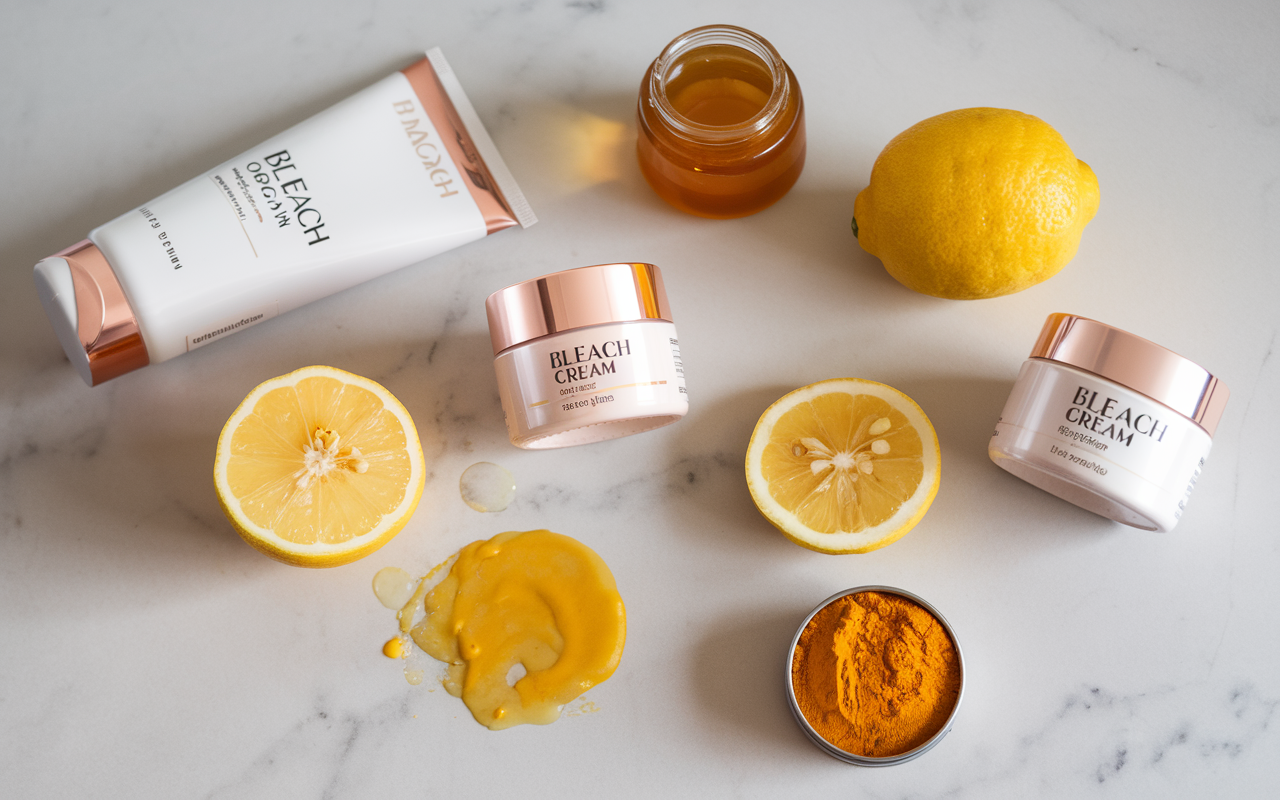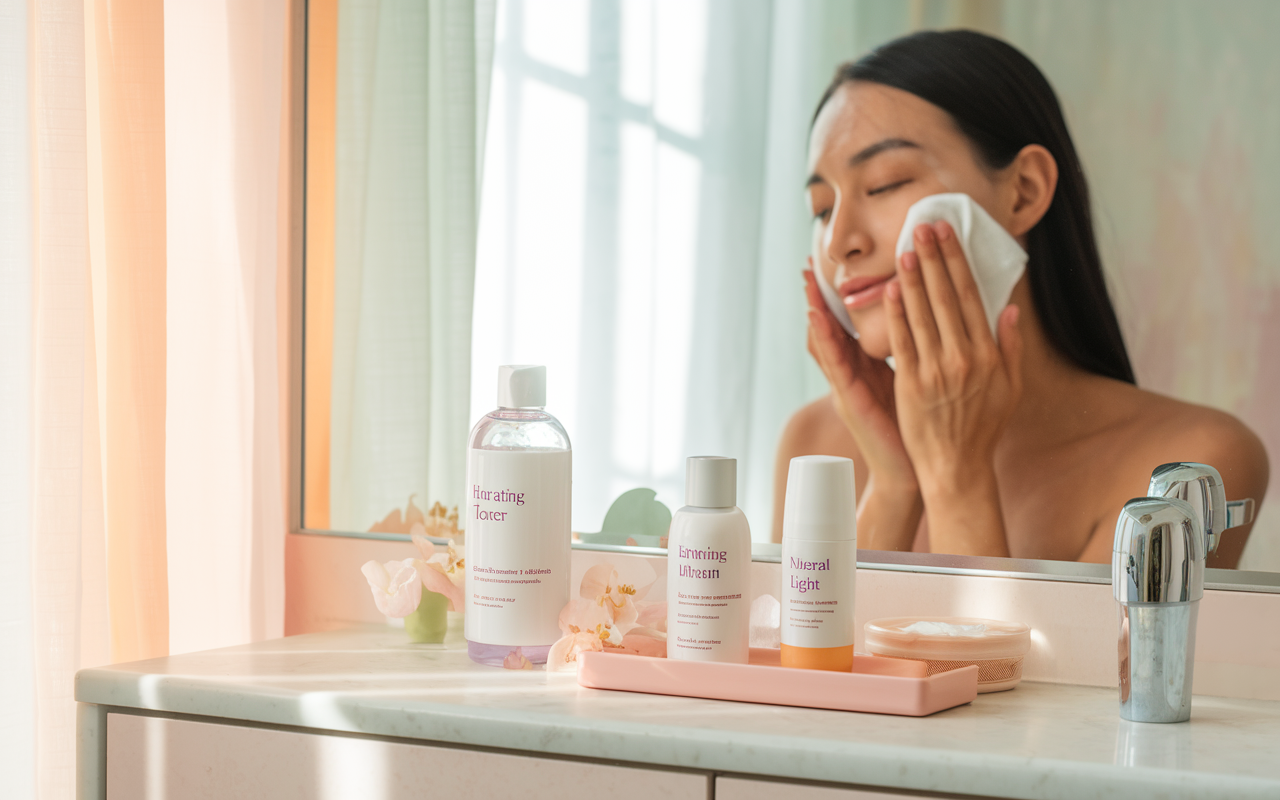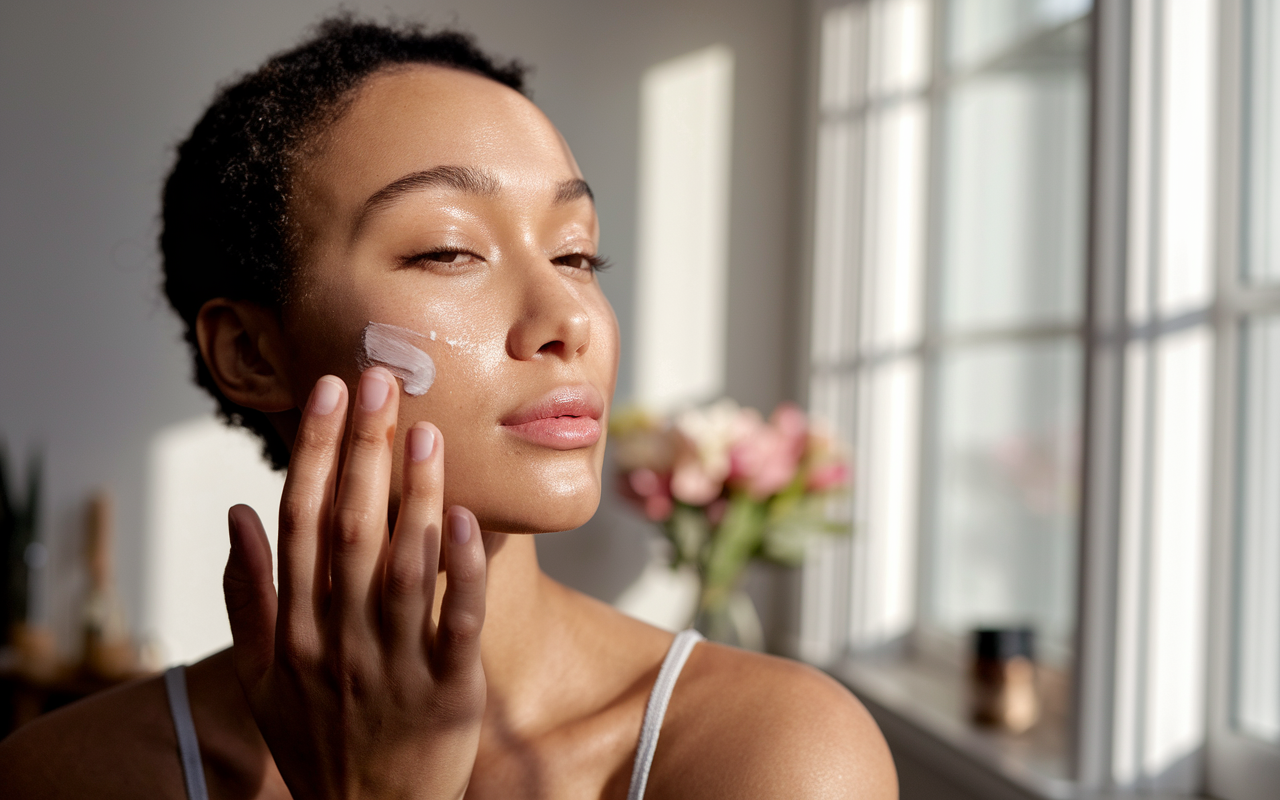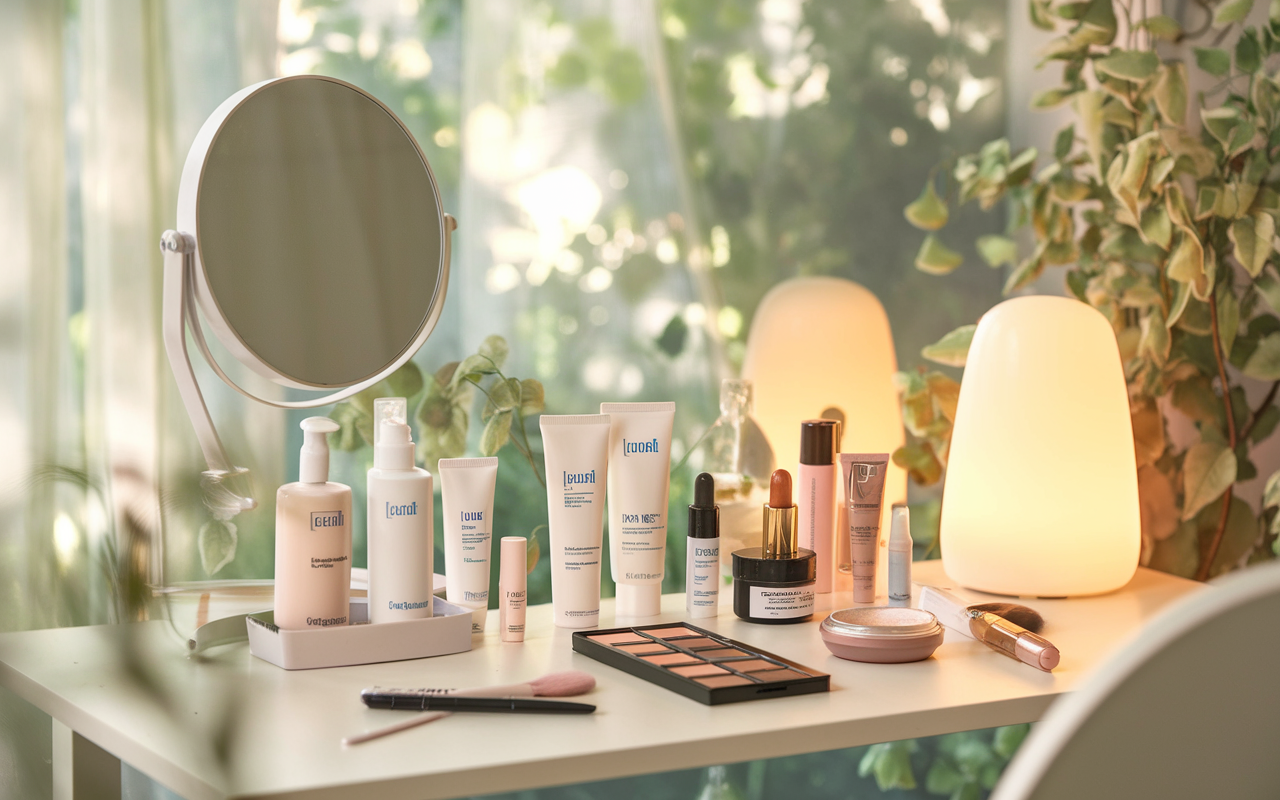
Introduction
Beauty is deeply personal. It’s the way we present ourselves to the world, but more importantly, it’s how we feel within our own skin. The delicate relationship between makeup and skincare plays a pivotal role in this process. While makeup allows us to express creativity and enhance our features, skincare ensures that the canvas we work on is healthy, glowing, and vibrant. Neglecting one for the other can disrupt this balance, leaving us either struggling with skin issues or unable to achieve the makeup looks we desire. This guide is about finding that harmony, ensuring that your makeup and skincare routines complement each other perfectly, so you can look and feel your best every single day.
Understanding the Interplay Between Makeup and Skincare
Makeup and skincare are two sides of a coin. Skincare lays the foundation for your makeup, creating a smooth, hydrated, and even-toned surface that allows your makeup to look its best. On the flip side, makeup can either enhance or hinder your skin’s health, depending on the products you choose and how you apply them. Ignoring skincare in favor of makeup might offer temporary beauty, but it often leads to long-term skin issues like dryness, breakouts, and premature aging. To truly master your beauty routine, you need to understand how these two elements interact and how to balance them in a way that benefits your skin in the long run.
Identifying Your Skin Type: The Foundation of Skincare
The Importance of Knowing Your Skin Type
Before you can create a harmonious makeup and skincare routine, it’s crucial to understand your skin type. Your skin type dictates the kinds of products you should use, how often you should apply them, and the types of makeup that will work best for you. Whether your skin is oily, dry, combination, or sensitive, each type requires specific care to maintain its health and vitality.
Determine Your Skin Type
To determine your skin type, start by observing how your skin behaves throughout the day. Does it become shiny and greasy, particularly in the T-zone? You likely have oily skin. If your skin feels tight, rough, and sometimes flaky, it’s probably dry. Combination skin typically exhibits oiliness in the T-zone with dryness on the cheeks. Sensitive skin is often prone to redness, irritation, and reactions to certain products. Once you’ve identified your skin type, you can begin to customize your makeup and skincare routine to meet its specific needs, ensuring that both aspects work together seamlessly.
Building a Skincare Routine That Supports Makeup Application
Daily Skincare Essentials
A well-crafted skincare routine is the cornerstone of any successful makeup application. Without a solid skincare foundation, even the most expensive and high-quality makeup products won’t deliver the results you desire. Your skincare routine should include cleansing, toning, moisturizing, and sun protection. Each of these steps plays a critical role in preparing your skin for makeup and ensuring that it remains healthy.
Morning vs. Nighttime Skincare Routines
In the morning, focus on protection and hydration. Cleanse your skin to remove any impurities that accumulated overnight, apply a toner to balance your skin’s pH, and follow with a lightweight moisturizer to hydrate and prep your skin for makeup. Sunscreen is non-negotiable, as it protects your skin from harmful UV rays that can cause premature aging and damage.
At night, your routine should shift towards deep cleansing and restoration. After removing your makeup, cleanse your skin thoroughly to ensure all traces of dirt, oil, and makeup are gone. Apply a toner to refresh your skin, then use a richer moisturizer or a night cream to replenish moisture lost during the day. Incorporating a serum tailored to your skin’s needs can provide additional benefits, such as brightening, firming, or reducing fine lines.
Prepping Your Skin for Makeup: The First Step to Flawlessness
The Importance of Skincare Before Makeup
The key to a flawless makeup look starts long before you reach for your foundation. Properly prepping your skin ensures that your makeup goes on smoothly, lasts longer, and looks better. Start with a clean face, free of oils and impurities. Follow with a moisturizer that suits your skin type, as hydrated skin holds makeup better and prevents it from looking cakey or dry.
The Significance of Primers and Base Products in Makeup and Skincare
Primers are an essential part of the makeup and skincare prep process. They create a barrier between your skin and your makeup, helping to smooth out imperfections, minimize the appearance of pores, and keep your makeup in place throughout the day. Choose a primer that aligns with your skin’s needs—whether it’s mattifying for oily skin, hydrating for dry skin, or color-correcting for uneven skin tones. This step sets the stage for a flawless application and ensures that your makeup and skincare efforts are not in vain.
Choosing Makeup That Complements Your Skincare
Just as your skincare routine is tailored to your skin type, so should your makeup choices be. Selecting the right makeup products can enhance the benefits of your skincare routine and help maintain your skin’s health. If you have oily skin, opt for oil-free or matte foundations that control shine and prevent breakouts. For dry skin, look for hydrating formulas that nourish your skin and provide a dewy finish.
Sensitive skin requires extra care, so choose makeup labeled as hypoallergenic and free from fragrances and harsh chemicals. Mineral makeup is often a good choice for sensitive skin, as it is typically free of irritants and provides a natural finish. Remember, the goal is to find makeup that not only enhances your beauty but also works in tandem with your skincare routine to keep your skin looking and feeling its best.
Layering Makeup and Skincare Products: A Guide to Seamless Application
The Art of Layering Products in Your Makeup and Skincare Routine
The process of layering your makeup and skincare products is an art form that requires a bit of finesse. The general rule of thumb is to apply products from the thinnest to the thickest consistency. This ensures that each product is absorbed properly and that your makeup looks natural and stays in place.
Step-by-Step Guide to Layering Makeup and Skincare
Start with your skincare products—cleanser, toner, serum, moisturizer, and sunscreen—allowing each one to fully absorb before moving on to the next. Once your skincare is complete, apply your makeup primer, followed by foundation, concealer, and powder. Each layer should be light and even to avoid a heavy or cakey appearance. The final touches—blush, bronzer, eyeshadow, and lipstick—should enhance your features without overshadowing the natural beauty of your skin.
Common Mistakes to Avoid When Layering
Avoid common mistakes like applying too much product at once or skipping essential steps like sunscreen. These missteps can compromise the effectiveness of both your makeup and skincare routines, leading to issues like clogged pores, uneven texture, and premature aging.
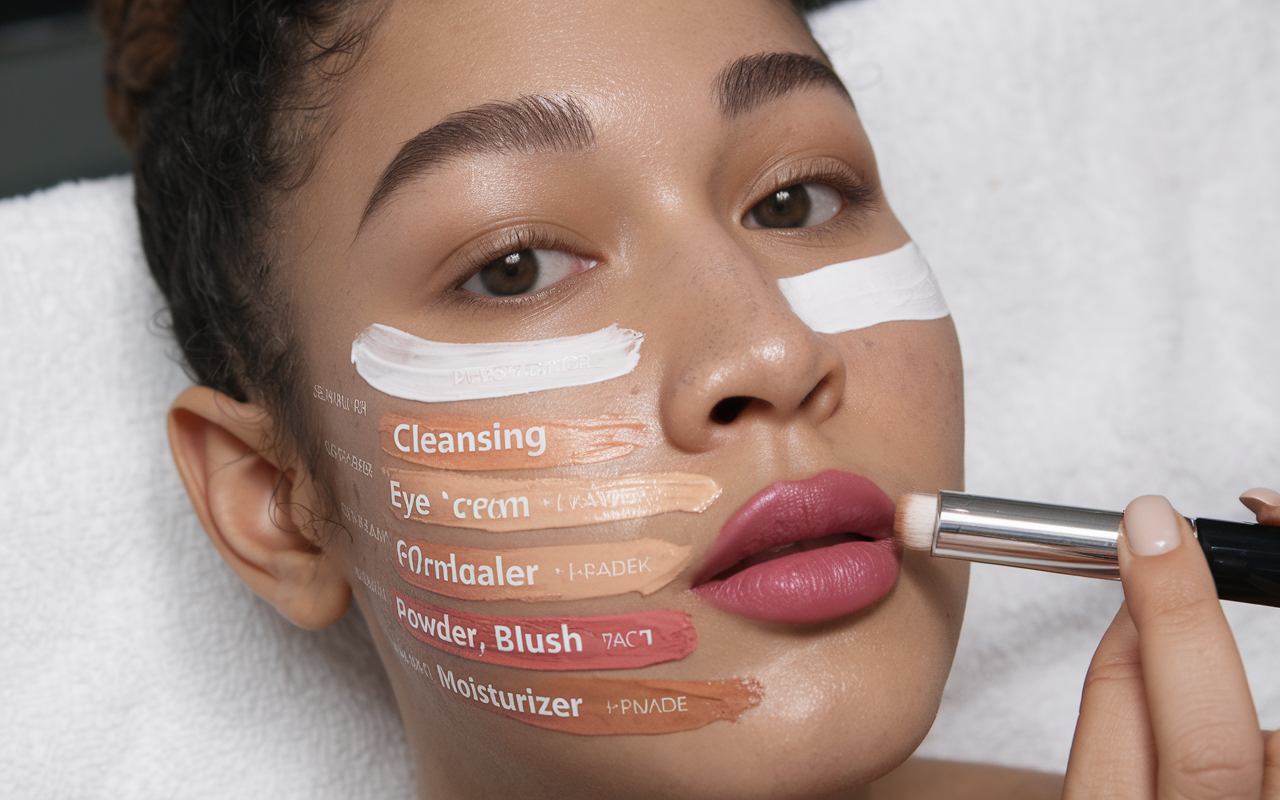
The Long-Term Effects of Makeup on Your Skin
Balancing Makeup and Skincare to Maintain Skin Health
While makeup can instantly boost your confidence and enhance your appearance, it’s important to be mindful of its long-term effects on your skin. Daily makeup use can lead to clogged pores, breakouts, and skin irritation, especially if you’re not diligent about removing your makeup at the end of the day.
Over time, heavy makeup application can also accelerate the aging process by dehydrating your skin and emphasizing fine lines and wrinkles. To mitigate these effects, it’s crucial to balance your love for makeup with a strong skincare routine. Choose makeup products that are non-comedogenic (won’t clog pores), and always prioritize skincare steps that protect and nourish your skin.
Recognizing Signs of Skin Stress and Damage
Recognizing signs of skin stress—such as increased sensitivity, redness, or persistent breakouts—can help you adjust your routine before long-term damage occurs. Listen to your skin and give it the care it needs, even if that means scaling back on makeup from time to time.
Makeup Removal: The Crucial Step in Your Skincare Routine
Why Removing Makeup is Essential for Healthy Skin
No matter how tired you are at the end of the day, removing your makeup is a non-negotiable step in your skincare routine. Sleeping with makeup on can lead to clogged pores, breakouts, and dull, tired-looking skin. It also prevents your skin from repairing itself overnight, which is crucial for maintaining its health and appearance.
Best Practices for Effective Makeup Removal
To remove makeup effectively, start with a gentle cleanser or makeup remover that dissolves makeup without stripping your skin of its natural oils. Follow with a second cleanse to ensure all traces of makeup, dirt, and oil are gone. This double cleansing method is particularly effective for those who wear heavy or long-wearing makeup.
After cleansing, use a toner to remove any remaining residue and restore your skin’s pH balance. Finish with a moisturizer to lock in hydration and keep your skin soft and supple. Taking the time to thoroughly remove your makeup not only protects your skin but also ensures that your skincare products can penetrate and work effectively.
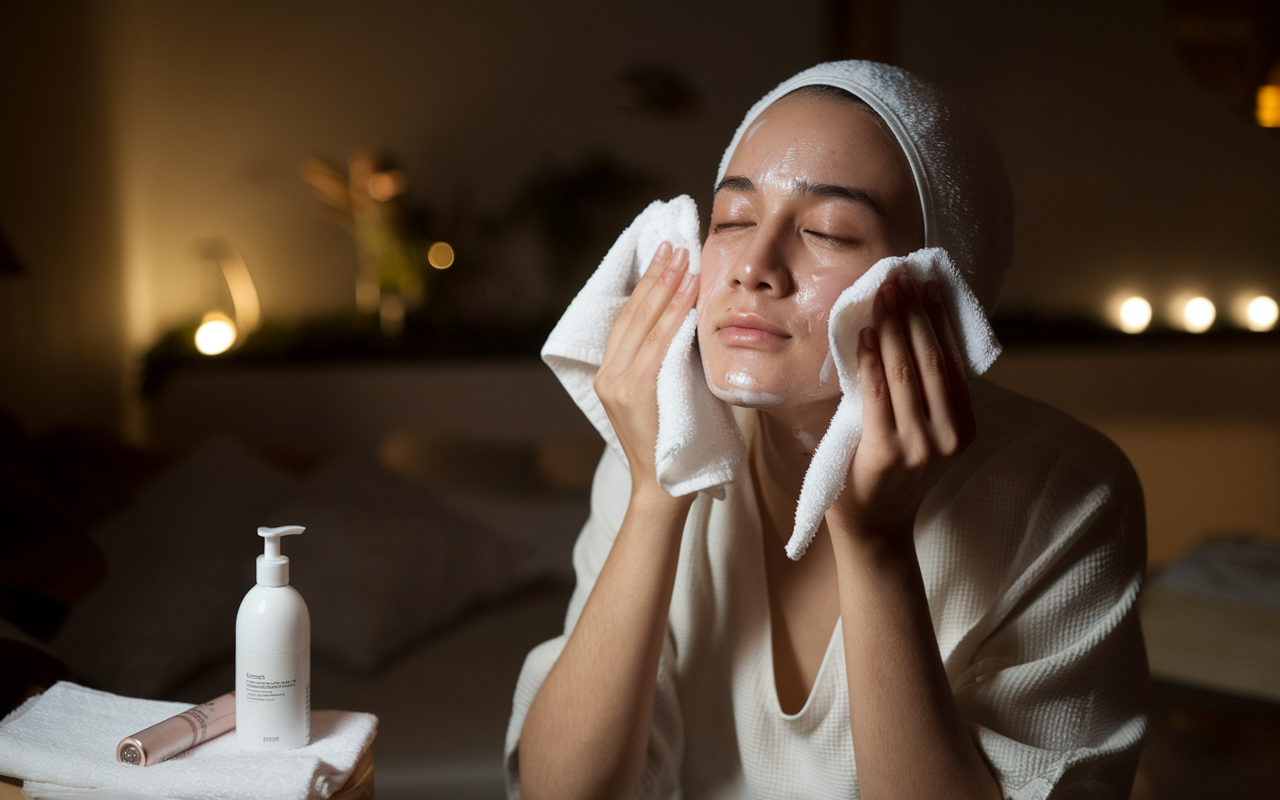
Restoring and Rejuvenating Your Skin After Makeup
Post-Makeup Skincare Rituals
After a long day of wearing makeup, your skin deserves a little extra TLC. Post-makeup skincare is all about restoring and rejuvenating your skin, helping it recover from the day’s stressors and preparing it for the next.
Start by rehydrating your skin with a hydrating toner or mist, followed by a nourishing serum that targets your skin’s specific needs. Exfoliation is also important, as it removes dead skin cells and allows your skincare products to penetrate deeper. However, be gentle—over-exfoliation can do more harm than good, leading to irritation and sensitivity.
How to Incorporate Treatments for Skin Rejuvenation
Incorporating a hydrating or soothing mask into your routine once or twice a week can provide an extra boost of moisture and help calm any irritation caused by makeup. Finally, don’t forget to moisturize—your skin needs to replenish lost moisture to stay healthy and resilient.
Common Mistakes in Makeup and Skincare
Makeup Mistakes that Harm Your Skin
Even with the best intentions, it’s easy to make mistakes in your makeup and skincare routine that can hinder your results. One of the most common mistakes is skipping sunscreen—UV exposure is the leading cause of premature aging, and even a small amount of sun exposure can cause damage over time.
Another common mistake is using the wrong products for your skin type. For example, using a heavy moisturizer on oily skin can lead to clogged pores and breakouts, while using a mattifying foundation on dry skin can emphasize dry patches and make your skin look dull.
How to Correct and Avoid These Common Pitfalls
Applying too much makeup or skincare product is another pitfall. It’s tempting to layer on product after product in the hopes of achieving better results, but this can actually overwhelm your skin and lead to irritation. Instead, focus on using the right amount of each product and giving it time to work.
Lastly, neglecting to remove makeup at the end of the day is a major skincare sin. As mentioned earlier, leaving makeup on overnight can cause a host of skin issues, from breakouts to premature aging. Make it a priority to cleanse your skin thoroughly every night, no matter how tired you are.
Understanding Ingredients: Natural vs. Synthetic in Makeup and Skincare
When it comes to choosing makeup and skincare products, understanding the ingredients is key. The debate between natural and synthetic ingredients is ongoing, with each side having its pros and cons. Natural ingredients, derived from plants, minerals, and other natural sources, are often praised for being gentler and less likely to cause irritation. However, they can also be less stable and have a shorter shelf life.
On the other hand, synthetic ingredients, created in a lab, are often more stable and effective in delivering specific results. They are formulated to target particular skin concerns, such as aging, acne, or hyperpigmentation. However, some synthetic ingredients can cause irritation or be too harsh for sensitive skin.
The key is to find a balance that works for your skin. Look for products with a mix of natural and synthetic ingredients, and pay attention to how your skin reacts. Always patch test new products before applying them to your face, and avoid ingredients that you know can cause irritation or breakouts.
Crafting a Personalized Makeup and Skincare Routine
Creating a personalized makeup and skincare routine is the ultimate act of self-care. Your routine should be tailored to your skin’s unique needs, taking into account factors like your skin type, concerns, and lifestyle. The goal is to create a routine that is both effective and sustainable—something you can stick to consistently without feeling overwhelmed.
Start by identifying your skin’s needs. Are you dealing with dryness, oiliness, acne, or aging? Once you know what your skin needs, you can choose products that target those concerns. Remember to keep your routine simple—more products don’t necessarily mean better results. Focus on a few key products that work well for your skin, and give them time to show results.
Don’t be afraid to adjust your routine as your skin’s needs change. Skin is dynamic, and factors like weather, stress, and hormones can all impact how your skin looks and feels. Listen to your skin, and be willing to tweak your routine as needed.
The Emotional Journey of Makeup and Skincare
Makeup and skincare are more than just routines—they’re rituals that can have a profound impact on your emotional well-being. The process of caring for your skin and applying makeup can be incredibly therapeutic, offering a moment of calm and self-reflection in an otherwise hectic day.
For many, makeup is a form of self-expression, allowing them to showcase their personality and creativity. Skincare, on the other hand, is about nurturing and caring for oneself, ensuring that your skin is healthy and radiant. Together, makeup and skincare can boost your confidence, improve your mood, and help you feel more connected to yourself.
It’s important to remember that beauty is not about perfection—it’s about feeling good in your own skin. Embrace your unique features, and don’t be afraid to experiment with different looks. The most important thing is to feel at ease and confident in your own skin.
Conclusion
The journey of mastering makeup and skincare is one of self-discovery and self-care. By understanding the intricate relationship between these two aspects of beauty, you can create a routine that enhances your natural beauty while maintaining the health of your skin. Remember, the key to radiant beauty lies in finding the right balance—one that allows your skin to thrive while still enjoying the creative freedom that makeup provides.
As you continue on your journey, take the time to listen to your skin, adjust your routine as needed, and most importantly, enjoy the process. After all, beauty is about more than just appearance—it’s about feeling good, inside and out.
FAQs
Q: How often should I exfoliate when using makeup regularly?
A: Exfoliating 2-3 times a week is generally sufficient, but sensitive skin types may need to exfoliate less often to avoid irritation.
Q: Can makeup cause acne?
A: Yes, makeup can clog pores and lead to breakouts, especially if not removed properly at the end of the day.
Q: Are natural skincare products always better for your skin?
A: Not necessarily. While natural products can be gentler, they can also cause allergies or be less effective than synthetic options. It’s all about finding what works for your skin.
Q: What is the best way to remove makeup without irritating my skin?
A: Using a gentle, oil-based makeup remover followed by a mild cleanser can effectively remove makeup without stripping your skin of its natural oils.
Q: How can I ensure my makeup and skincare products work well together?
A: Choose products that are compatible with your skin type and concerns. Layer your skincare and makeup products in the correct order, and always allow each layer to absorb fully before applying the next.
Also Visit:
Skin Care Headband – The Secret to a Mess-Free Beauty Routine 2024
Ultimate Guide 2024 – Skin Care Do I Wash Away Toner?
Organic Skin Care – Embracing Nature’s Purest Gifts for Radiant Skin 2024
